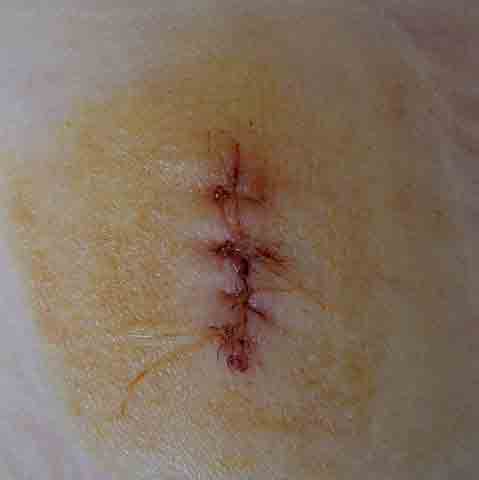A new, creative and innovative, minimally invasive skin-stretching device provides a promising alternative for surgical treatment of large scalp defects, reports a paper in The Journal of Craniofacial Surgery.
The journal, under the guidance of Editor-in-Chief Mutaz B. Habal, MD, FRCSC, is published in the Lippincott portfolio by Wolters Kluwer.
For many patients with scalp defects, the relatively simple skin-stretching technique may avoid the need for complex skin flap or graft procedures or prolonged healing times – with good functional and cosmetic results and a low complication rate, according to the technical report by Peng Chen, PhD, and colleagues of Chongqing University Central Hospital, China
‘Innovative and efficient’ methods for treating large scalp defects
For craniofacial, maxillofacial, pediatric, and adult plastic surgeons, scalp wounds can pose a difficult reconstructive challenge. For defects that cannot be closed directly, traditional methods include dressing changes or skin grafts or flaps. These procedures have significant disadvantages, including long healing times or complicated operations with general anesthesia.
Various skin-stretching devices have been successfully used to treat skin and soft tissue defects in other types of the body. However, few studies have examined skin-stretching approaches for the scalp area.
Dr. Chen and colleagues report their experience with a new type of skin-stretching device, called EASApprox®, for large scalp defects. Designed for the unique characteristics of the scalp tissue, the EASApprox device enables the surgeon to gently stretch the skin on either side of scalp defects.
Over 1 year, the researchers used the EASApprox device to manage scalp defects in 12 patients. The cause of the scalp wounds was pressure ulcers in 6 patients, avulsion trauma in 3, and poorly healed incisions in 3. Each patient underwent 3 to 5 stretching cycles. In each cycle, tension of no more than 3 kilograms (about 6.5 pounds) was applied for 4 minutes, then released for 1 minute. Procedures were performed using local anesthesia, with an average total operating time of about 45 minutes.
In 10 patients, the stretching procedure provided enough skin for the wounds to be closed directly using sutures. In the other two cases, the wounds were allowed to heal gradually, with regular dressing changes. The scalp defects successfully healed in 11 of 12 cases, with an average healing time of about 2 weeks. The remaining patient experienced complications due to infection, related to immobility and poor nutrition.
Evaluation of final outcomes showed good skin color and elasticity, with acceptable scarring. Through 3 months’ follow-up, there were no serious complications such as wound tearing or necrosis (tissue death). None of the patients reported problems with skin pain, numbness, or other discomfort in the treated area.
Dr. Chen and colleagues share technical details on their use of the EASApprox device, including a video demonstrating their technique in a patient with a scalp defect due to a pressure ulcer. The researchers emphasize the need for further clinical and preclinical studies of this “innovative and efficient method.” In the meantime, they conclude, “treatment [using the] skin-stretching device was effective for scalp defect and has the advantages of convenient operation, acceptable functional results, without severe complications.”
Click here to read “Application of Skin-stretching Device for Closing Scalp Defect“
DOI: 10.1097/SCS.0000000000008856


